- Home
-
Our tours
- Our tours
- Africa
- Asia
- Latin America
- North America
- Oceania
- Holiday types
-
Accommodation
- Accommodation
- Africa
- Asia
- Latin America
- North America
- Oceania
-
Practical info
- Practical info
- Africa
- Asia
- Latin America
- North America
- Oceania
- Info & contact
- Blog
When is the best time to go on safari in Africa?
27.10.2024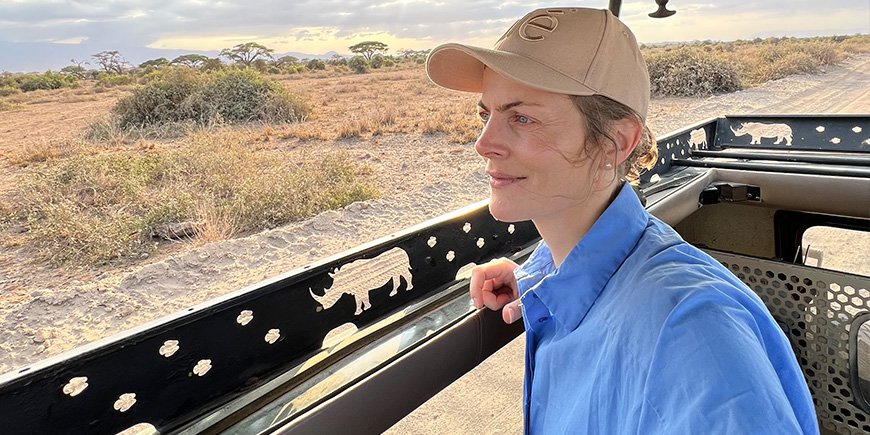
Africa offers unique safari experiences all year round.
But when is the best time to go on safari in Africa?
It depends on a number of things, including where you want to go and what you would like to experience. Do you have a special desire to experience the Great Migration? Do you dream of seeing the majestic mountain gorillas in Uganda? Or do you want to experience baby animals and lots of birds?
In this blog post, we go through the different seasons in Africa so that you can find the best time for your dream safari.
Dry season vs. rainy season – what difference does it make to your safari?
Safari experiences can vary significantly, depending on whether you travel during the dry season or the rainy season. Both seasons have their advantages and disadvantages, which means that it is all about finding out which season best suits your wishes.
Please note that even if you travel during the dry season, you may risk rain, just as you can travel during the rainy season without seeing as much as a drop of rain.
The dry season
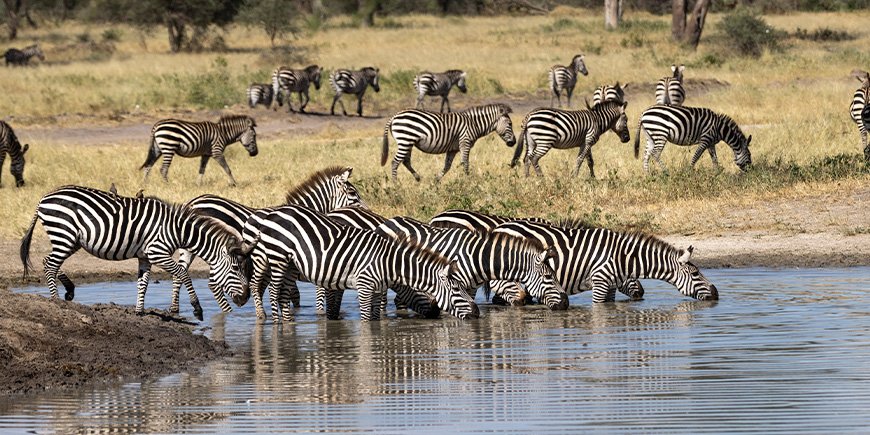
The dry season typically means very little rain, plenty of sunshine and pleasant, warm temperatures.
Most people prefer to go on safari in Africa during the dry season.
During the dry months, the animals are easier to spot because they often gather around waterholes and rivers. The vegetation is sparse, which gives better visibility, and the weather is generally stable with fewer rain showers.
3 advantages of dry season safari
- Dry weather: Safari in stable weather with less risk of sudden downpours.
- The animals are easy to spot: When water resources are scarce, the animals gather around a few waterholes, making them easier to spot.
- Easier access: The roads are better during the dry season, making it easier to get around and minimising the risk of cancellations.
3 disadvantages of dry season safari
- More people: The dry season is high season, so you must be prepared for having to share your experience with others to a greater extent.
- More expensive tours: High season also means higher prices for both travel and accommodation.
- Temperatures: In some places, it can get chilly during the dry seasons, especially at night and in the early hours of the morning.
The rainy season
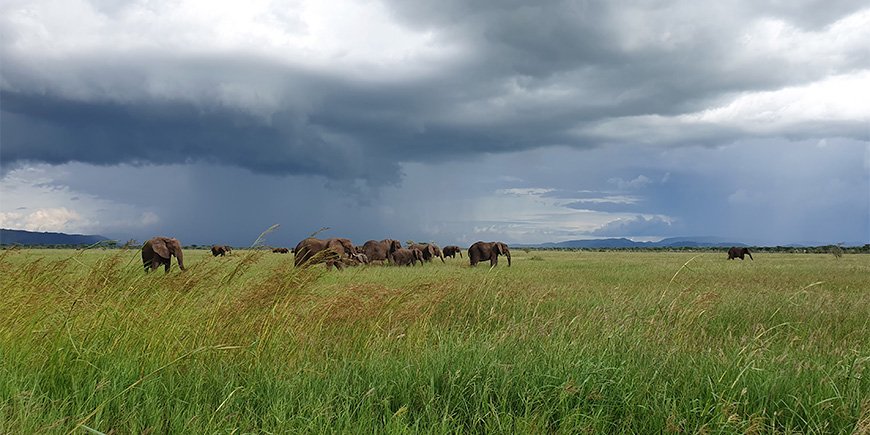
The rainy season means (in some places) a lot of rain and humid weather with warm temperatures. The rain typically falls as heavy showers, after which it clears up again.
The rainy season offers beautiful, lush landscapes and fewer visitors, which can give you a more intimate safari experience. There is often money to be saved during these months, and you also contribute to a more even distribution of the country’s resources and the locals’ income, which is spread out over the year. When you travel during the rainy season, when few people otherwise go on safari, you also help reduce the risk of overtourism.
3 advantages of rainy season safari
- Lusher landscapes: The green landscape makes the surroundings beautiful and vibrant.
- More intimate experiences: With fewer visitors, it is easier to have more private and uninterrupted game drives.
- Cheaper safari: Tours scheduled outside the high season mean better prices for both travel and accommodation. You also help reduce the risk of overtourism and ensure that the country’s resources and the locals’ income are spread out over the year.
3 disadvantages of rainy season safari
- Rain: It can rain heavily, although the downpours are often short.
- The animals can be more difficult to spot: With more water in the natural surroundings, the animals disperse, which can make them harder to find.
- Muddy roads: The roads can be challenging to drive on, especially in the remoter reserves.
When is the best time to go on safari in …
The vast majority of people think that it is best to go on safari during the dry seasons.
But the dry seasons vary from country to country. Here is an overview of when it is dry season at our safari destinations:
- Tanzania: January-February, June-October (June-October in Southern Tanzania)
- Kenya: January-February, June-October
- South Africa (Kruger National Park): April-October
- Botswana: April-October
- Uganda: December-February, June-August
When is the best time to experience…
There are special periods of the year in Africa when you can experience some of the most unique and memorable animal migrations and natural phenomena.
Below you will find an overview of some of them.
The Great Migration
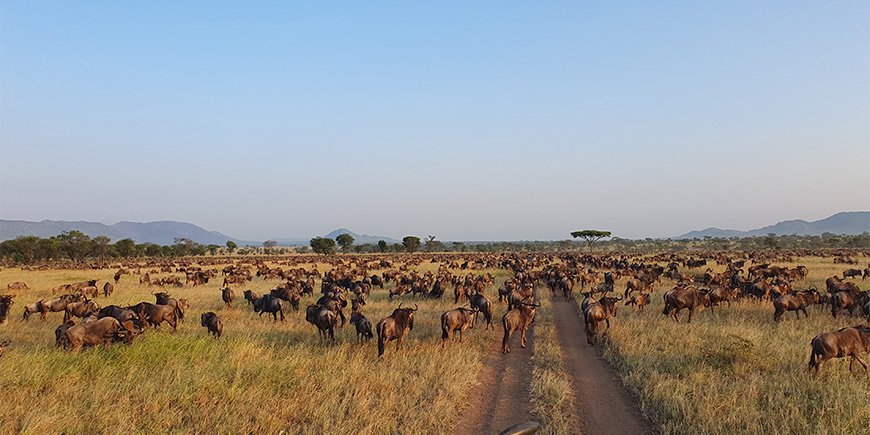
The Great Migration is the world’s largest and longest migration of mammals on land, where millions of wildebeest, zebras and other herbivores migrate between Serengeti in Tanzania and Masai Mara in Kenya in search of water and grass.
In some periods of the year, the migration (and the many, many animals) will be centred around the southern part of Serengeti and the Ngorongoro Crater, while, in other periods, the migration will take place towards the north in Masai Mara in Kenya. The Great Migration is thus a continuous process that occurs all year round in different places.
Best time:
As such, there is consequently no best time to see the Great Migration – because it can be experienced throughout the year. But if there is something special that you want to experience, it can still be a good idea to be aware of seasonal differences.
- January-March: Migration is in the southern part of Serengeti, where the wildebeest have calves that attract large predators.
- May to July: In this period, the migration takes place in the northwestern part of Serengeti between the Ikorongo and Grumeti game reserves.
- July-October: During this period, the animals cross the Mara River to get to Masai Mara, where they migrate for a period before returning to Serengeti. This is often referred to as one of the absolute highlights of the Great Migration.
During the rest of the year, the animals migrate from the northern part of Serengeti towards the Ngorongoro Crater and then back north again. You can read more in our guide to the Great Migration here.
Water in the Okavango Delta and huge elephant herds in Botswana
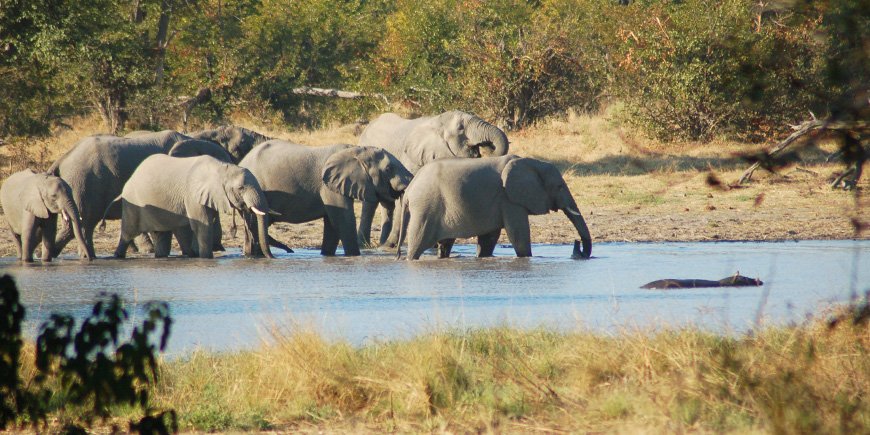
The Okavango Delta in Botswana is one of the world’s most unique ecosystems.
The water that arrives from the mountains in Angola fills the delta and creates a wildlife paradise. For example, thousands of Botswana’s elephants migrate here to drink when there is water in the delta.
Best time: June-October, when the Okavango Delta is full and animals flock to it.
Gorilla tracking in Uganda
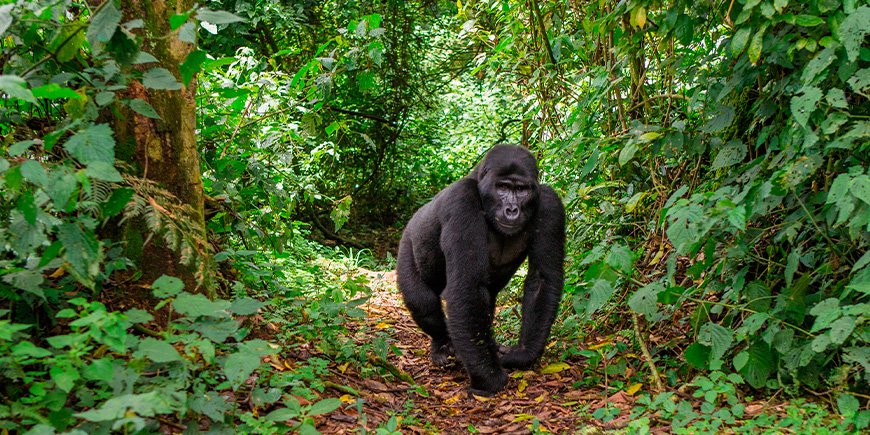
One of the most intense and unique safari experiences is to track the mountain gorillas through the dense rainforest of Uganda. Gorilla tracking gives you the opportunity to get up close to these endangered animals in their natural habitat.
Best time: during the dry seasons: June-August and December-February, when the trails are less muddy, making gorilla tracking easier.
Baby animals in South Africa
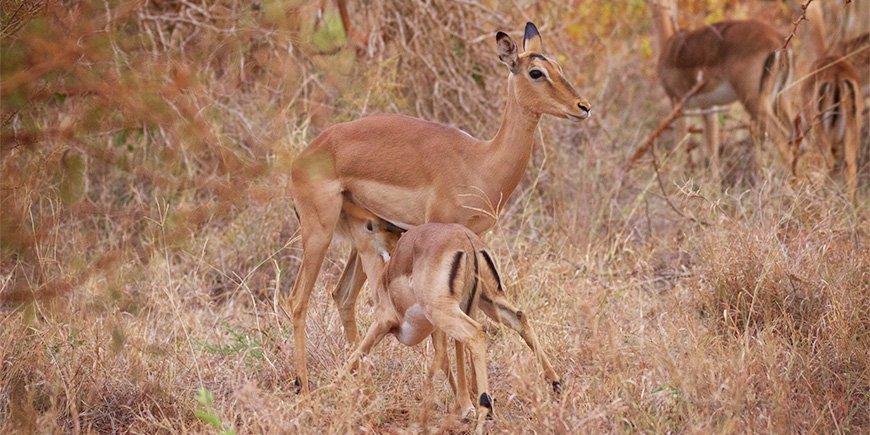
South Africa, especially Kruger National Park, is known for its amazing wildlife, where you can experience the ‘Big Five’ and many other species.
A particular highlight in the animal kingdom occurs when the animals give birth to their young during the rainy season, usually from late November to March. This is a unique time when you can experience lots of newborn baby animals, from small antelope calves to lion cubs that are starting to explore the world. At the same time, the young animals attract predators, which makes the safari experience extra exciting.
Best time: November-March.
Wintering birds
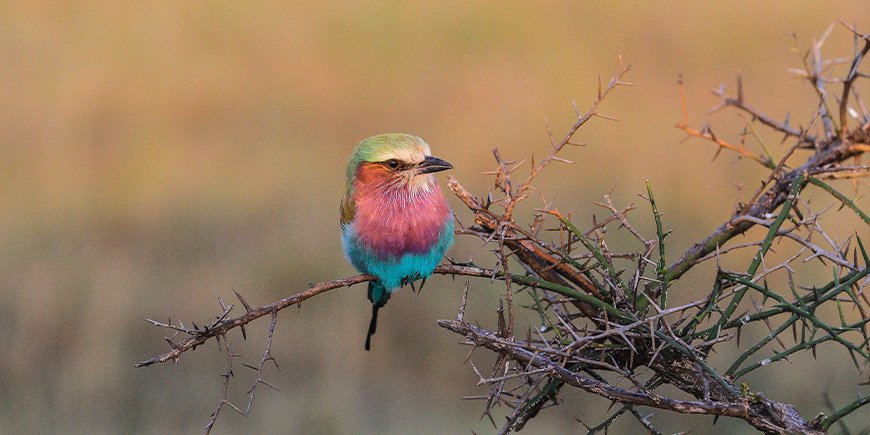
The African national parks contain a myriad of exciting bird species, both birds that live in Africa throughout the year and birds that arrive to spend the winter in the warm African weather. For example, you can experience more than 1,000 different bird species in Tanzania alone!
Best time: December to February, when migratory birds stay in the African national parks.
When is the best time for you to go on safari in Africa?
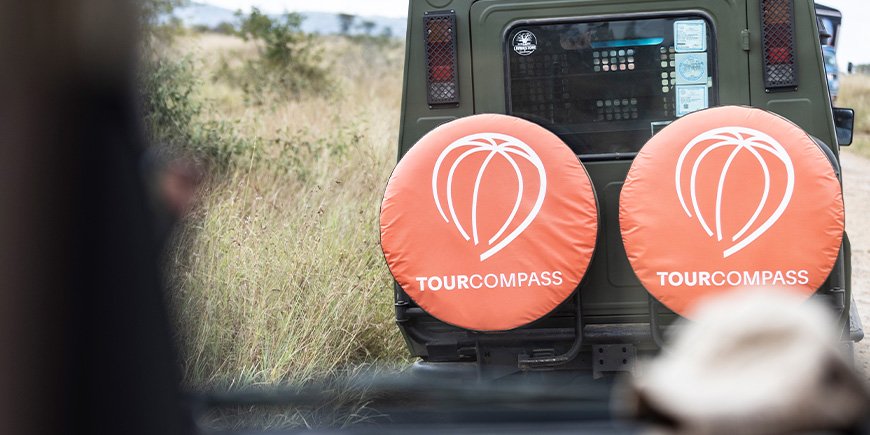
Although it is most popular to travel during the dry season, the best time will depend on what you want to experience on your safari.
Regardless of whether you want to experience predators hunting during the Great Migration, track gorillas in the rainforests of Uganda or see newborn baby animals in South Africa, there is a perfect time for you.
Our travel specialists are ready to help you find the right time for you to go on safari in Africa.
It’s safe to experience the world with TourCompass – we’re with you all the way.
TourCompass – From tourist to traveller
